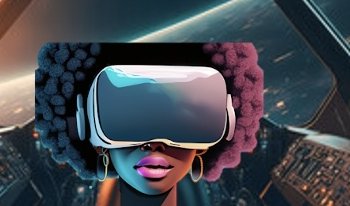
Many questions span industry and academia about the value and viability of Virtual Reality (VR). The cost and discomfort of current VR headsets leave many people wondering if Virtual Reality is worth the investment. The empirical study described in this discourse examined levels of immersion, reported realism, and presence reported by users of different consumer available immersive technologies, tradeoffs to attaining immersion, and users’ intention to adopt VR after experiencing the technologies. The researchers used Elite Dangerous, a space flight simulator game optimized for both VR and flat screen condition of the research. The study reported here explored the research question: do users reported a difference in levels of immersion, realism, and presence impacted by a VR device versus a flat monitor display? This between groups experiment presented users with the Oculus Rift VR headset condition and a flat screen experience in which a simulated 360° view was afforded by the tracking the user’s head movement and controlled virtual camera angels displayed on a flat screen monitor. Participants noted intrusiveness, discomfort, controls being difficult to learn, and difficulty seeing in the VR condition. This diminished user satisfaction could be a barrier to anticipated benefits of VR, which highlights exigency for VR User Centered Design (UCD). Participants who experienced the flat screen experience first and VR headset second were significantly more likely to report an intent to adopt VR than those who only experienced the VR condition. This could lead to research on the impact of juxtaposition of new technology with existing technologies on user perception and the intent to adopt.

This paper presents a prototype that aims to make education accessible to all. The chosen learning topic focuses on youth language to overcome language barriers and create better access to society for those who are not fluent in German. The results are based on a systematic literature review and the development of a prototype tested using the BITV tests. The key findings are that accessibility should be a strategic goal set and repeatedly promoted by senior management. This way, it does not become less of a priority, which has often proven to be a weakness because the accessible elements of software are not necessarily needed for its core functions. With the insight of using an agile participation model, accessible applications can be completed in a shorter average time in the future. The project also demonstrates the importance of accessibility awareness in software development.

In this research, using an electric car as a motion platform we evaluated the user experience of motion representations in a virtual reality (VR) system. The system represents physical motion when it operates the car backward and forward with accompanying visual motion included in stereoscopic images in a head-mounted display (HMD). Image stimuli and car-based motion stimuli were prepared for three kinds of motion patterns, "starting", "stopping" and "landing", as experimental stimuli. In the experiment, pleasure and arousal were measured after each stimulus representation using the Self-Assessment Manikin (SAM), a questionnaire about emotions. Results showed that the car-based motion stimulus increased pleasure in the "landing" pattern.